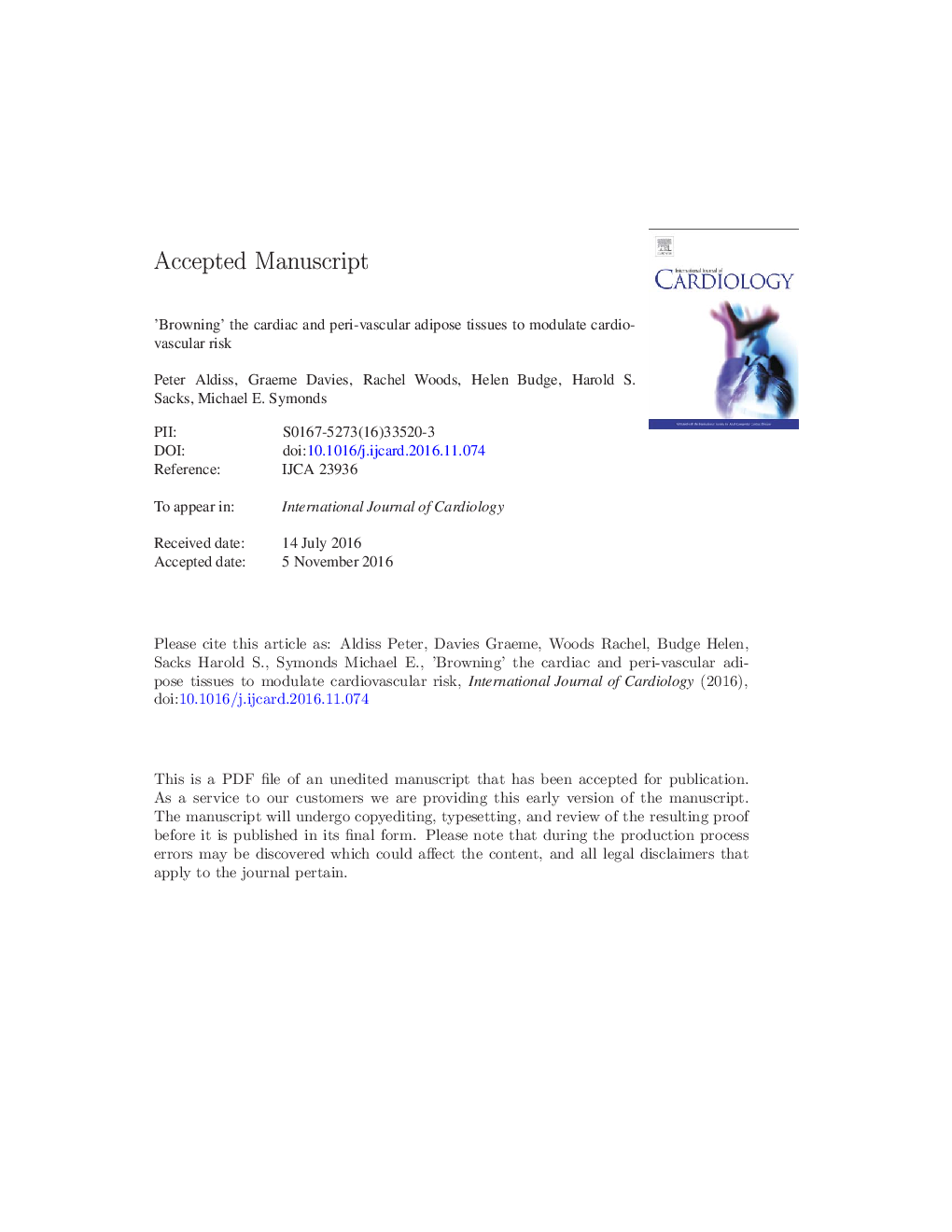| Article ID | Journal | Published Year | Pages | File Type |
|---|---|---|---|---|
| 5605536 | International Journal of Cardiology | 2017 | 33 Pages |
Abstract
Excess visceral adiposity, in particular that located adjacent to the heart and coronary arteries is associated with increased cardiovascular risk. In the pathophysiological state, dysfunctional adipose tissue secretes an array of factors modulating vascular function and driving atherogenesis. Conversely, brown and beige adipose tissues utilise glucose and lipids to generate heat and are associated with improved cardiometabolic health. The cardiac and thoracic perivascular adipose tissues are now understood to be composed of brown adipose tissue in the healthy state and undergo a brown-to-white transition i.e. during obesity which may be a driving factor of cardiovascular disease. In this review we discuss the risks of excess cardiac and vascular adiposity and potential mechanisms by which restoring the brown phenotype i.e. “re-browning” could potentially be achieved in clinically relevant populations.
Related Topics
Health Sciences
Medicine and Dentistry
Cardiology and Cardiovascular Medicine
Authors
Peter Aldiss, Graeme Davies, Rachel Woods, Helen Budge, Harold S. Sacks, Michael E. Symonds,
